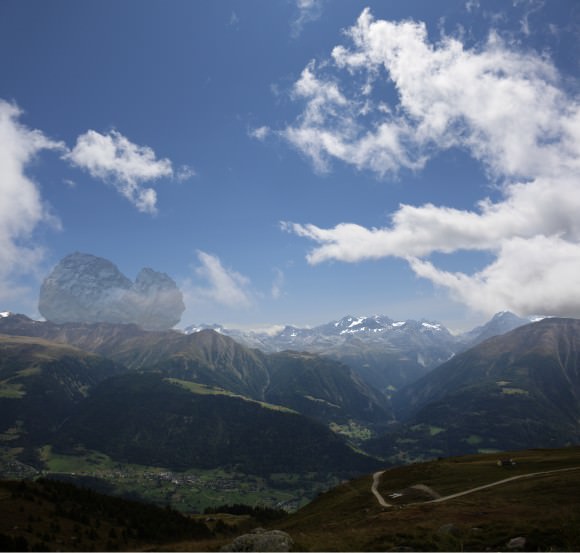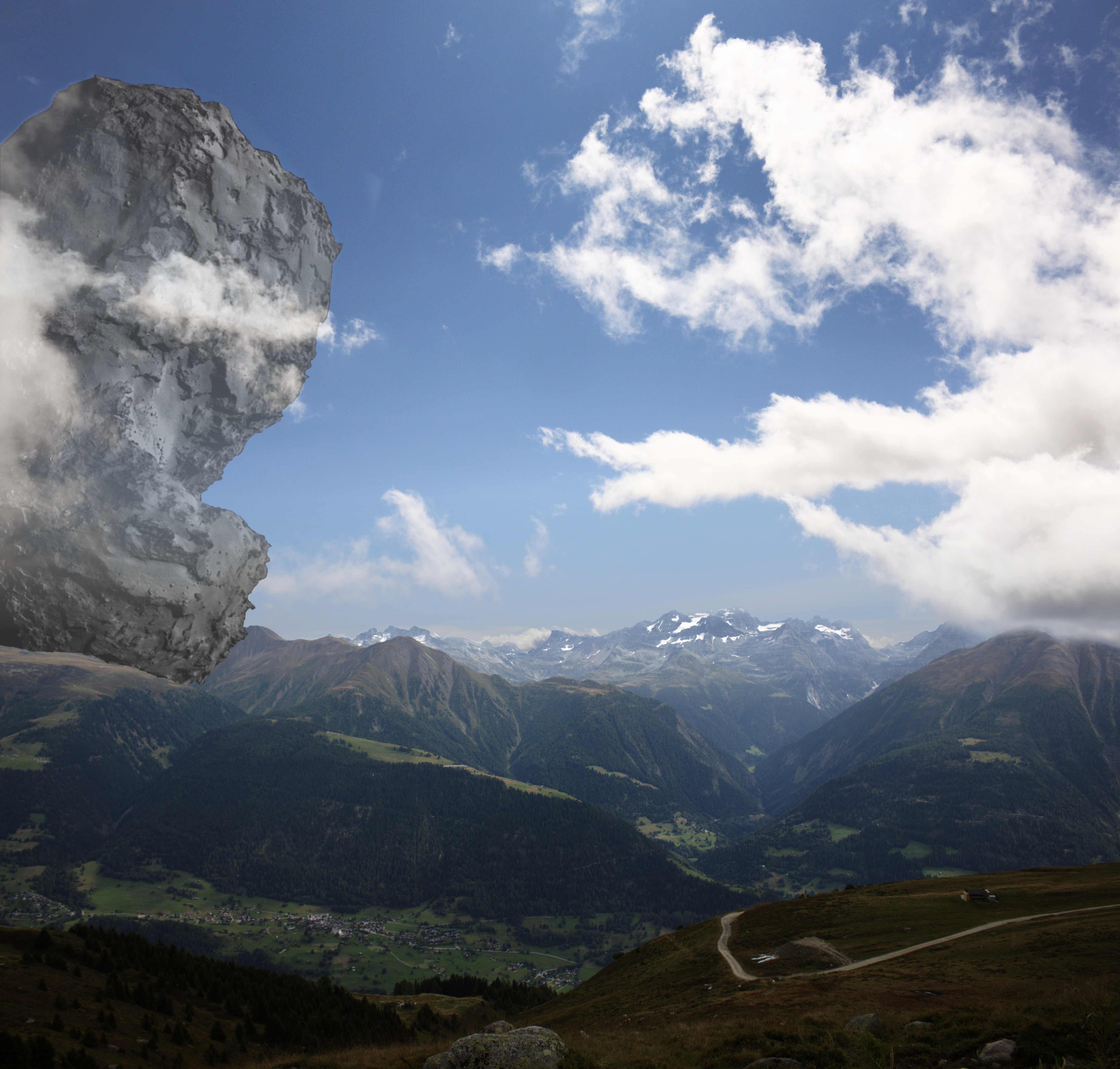There have been some cool visualizations showing the size of the nucleus of the target comet of ESA’s Rosetta mission – where the Philae lander will attempt to land on November 12. One shows the nucleus on the ground in Los Angeles, another has it looming as a dark mountain over Manhattan, and yet another has its silhouette superimposed onto the City of London.
On a hiking holiday in the Swiss Alps this summer, it struck me that an Alpine setting — or its equivalent in other countries – looking at kilometer-sized objects at distances up to a dozen or dozens of kilometers is probably the situation where we can best develop an intuition about just how large the nucleus of 67P/Churyumov–Gerasimenko is.
Today, I took the time to insert the nucleus in one of my holiday snaps, using one of the Rosetta Navcam images that ESA has just released under a Creative Commons license. My original image was taken from a hiking trail between the Swiss villages of Bettmeralp and Fiescheralp, looking South-East towards Italy. The first image, above, has the comet floating just behind the first mountain range in the Binntal valley.
This is a fairly big sucker, even compared with the mountains in front and behind. In this image, the cometary nucleus is at a distance of about 7.2 kilometers (4.3 miles) from the observer.
I’ve also set the nucleus a bit farther back: Just beyond the most distant mountain range dominating the center of the image, which includes Italy’s Mount Cervandone, 3210 meters (10,530 ft.) high. It’s sitting right beyond the most distant mountain range visible in the original image (at a distance of about 14 km [8.7 mi] from the observer), and still looks fairly impressive:

And this, I guess, makes a cometary nucleus a nice link between the terrestrial and the cosmic: It is comparable to the largest structures we can directly see here on Earth, and does not have the enormous (astronomical!) dimensions so often encountered in space, whose size we cannot directly imagine.
On November 12, we’ll hopefully have another comparison: How will the view transmitted by the Philae lander correspond to terrestrial landscapes? What impression of size will we get then? Good luck, Rosetta and Philae!
Production notes
The images were made from two images shot with a Canon 70D with the standard kit lens – one showing the landscape, and a separate one showing more suitable sky and clouds on a different day, in a different location. Using Gimp, I inserted a fairly well-known Navcam image from ESA’s Flickr collection. The image came with the information that its resolution was 5.3 m per pixel; I used this plus distance information from Google Maps and elevation information via Mapcoordinates, combined with a test image giving me my camera’s pixel scale, to estimate the appropriate size of the cometary nucleus in the image (no lens distortion; camera modeled as a simple pinhole camera).


Since I know that area in Switzerland very well, this is a very interesting visualization for me. Thanks Markus!
I have to note though that (if I’m not terribly mistaken) you have the comet floating just *in front* of the first mountain range of the Binntal area – namely in the Rappetal, which joins the river Rhone (aka Rotten) directly in Mühlebach. Sorry for being so pedantic…